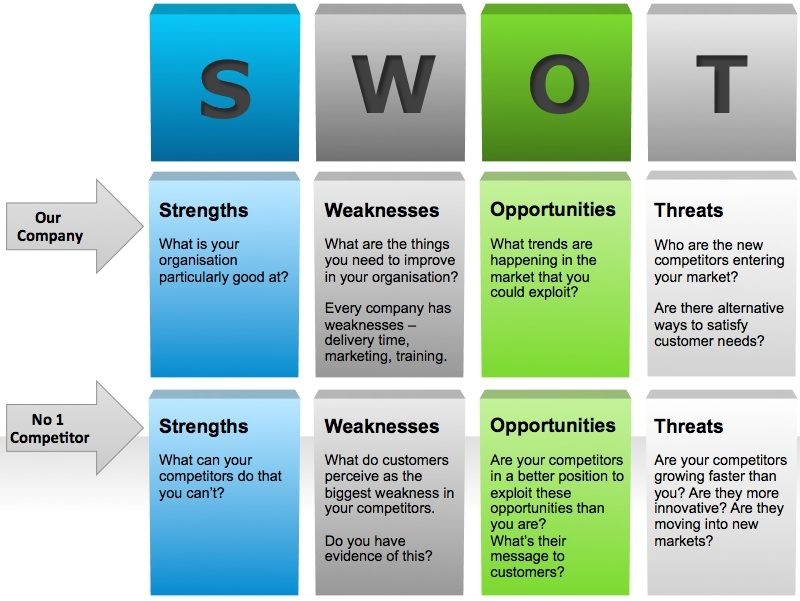
Competitor analysis is a crucial component of any successful business strategy. Understanding your competitors’ strengths, weaknesses, opportunities, and threats (SWOT) is essential for making well-informed decisions and gaining a competitive edge.
This article will explore how to use a competitor analysis worksheet with SWOT analysis to gather valuable insights and develop effective marketing and business strategies.
What is a Competitor Analysis Worksheet Using SWOT?
A competitor analysis worksheet using SWOT is a tool that helps businesses evaluate their competitors by examining the internal and external factors that impact their performance. SWOT analysis stands for strengths, weaknesses, opportunities, and threats, and it provides a structured framework for comprehensively analyzing competitors.
By conducting a competitor analysis using SWOT, businesses can identify their competitors’ strengths and weaknesses, understand the opportunities and threats in the market, and devise strategies to leverage their strengths while mitigating weaknesses.
Why is Competitor Analysis Important?
Competitor analysis is important for several reasons:
- Identifying market trends: Analyzing competitors helps businesses stay updated with the latest market trends, customer preferences, and emerging opportunities.
- Identifying gaps in the market: By understanding competitors’ weaknesses, businesses can identify gaps in the market and develop products or services to fill those gaps.
- Developing effective marketing strategies: A thorough competitor analysis enables businesses to develop marketing strategies that differentiate their products or services from competitors and attract target customers.
- Monitoring industry changes: Competitor analysis allows businesses to monitor changes in the industry, such as new entrants, mergers and acquisitions, and technological advancements.
- Identifying potential threats: By identifying competitors’ strengths and potential threats, businesses can proactively respond and safeguard their market position.
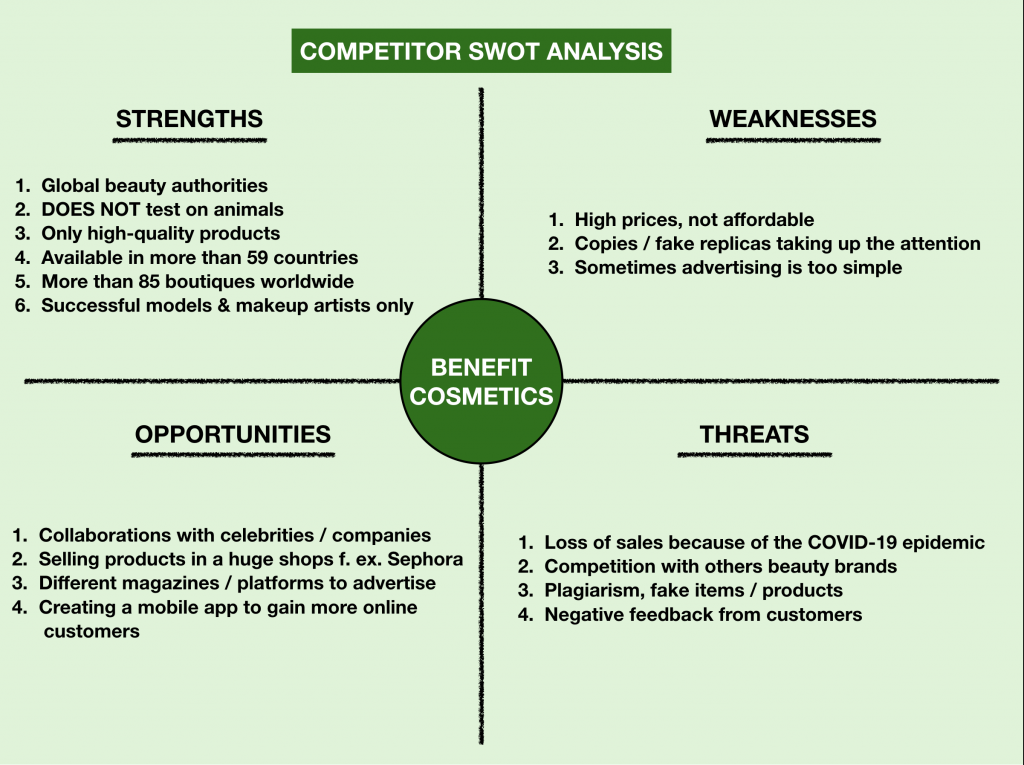
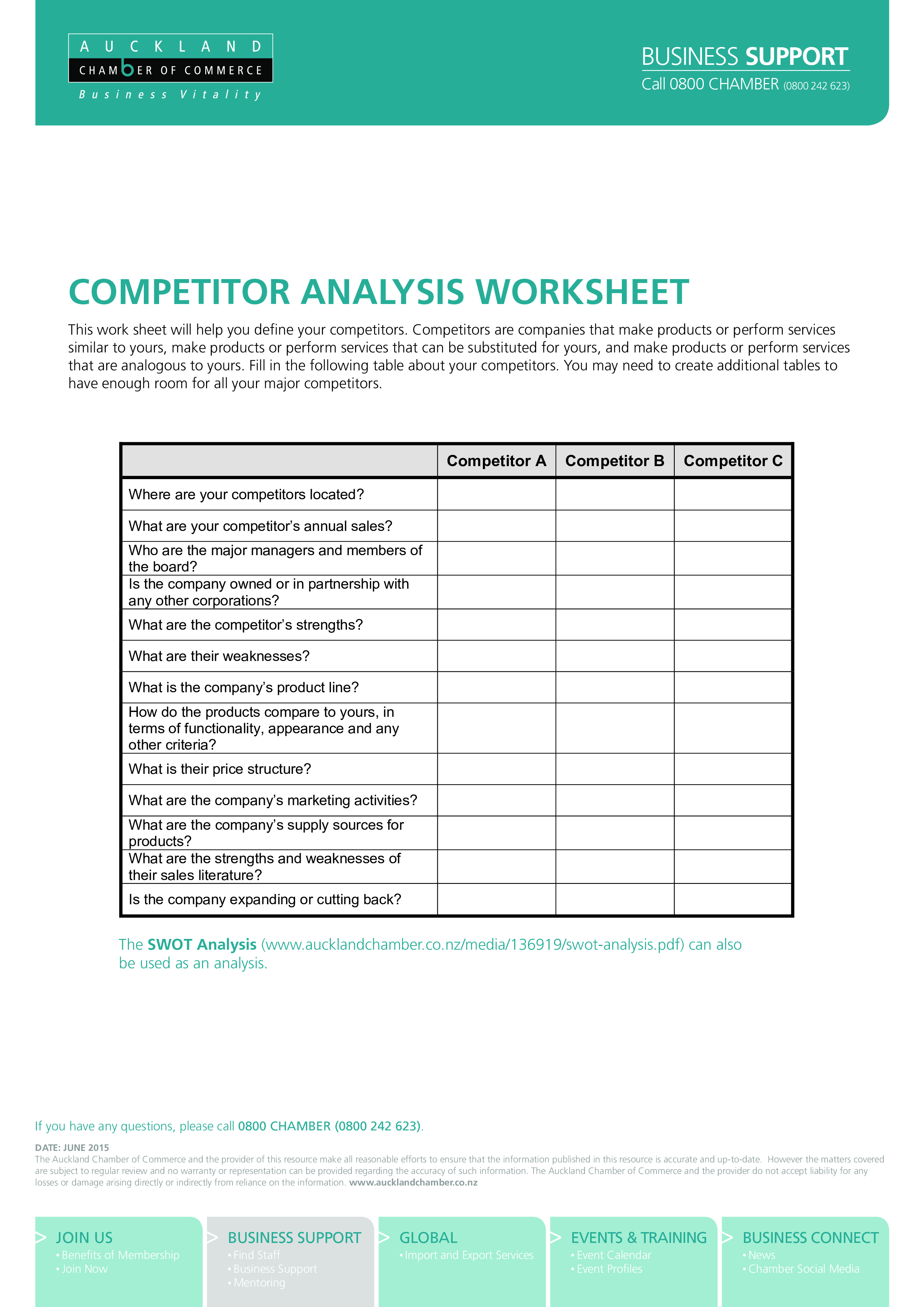
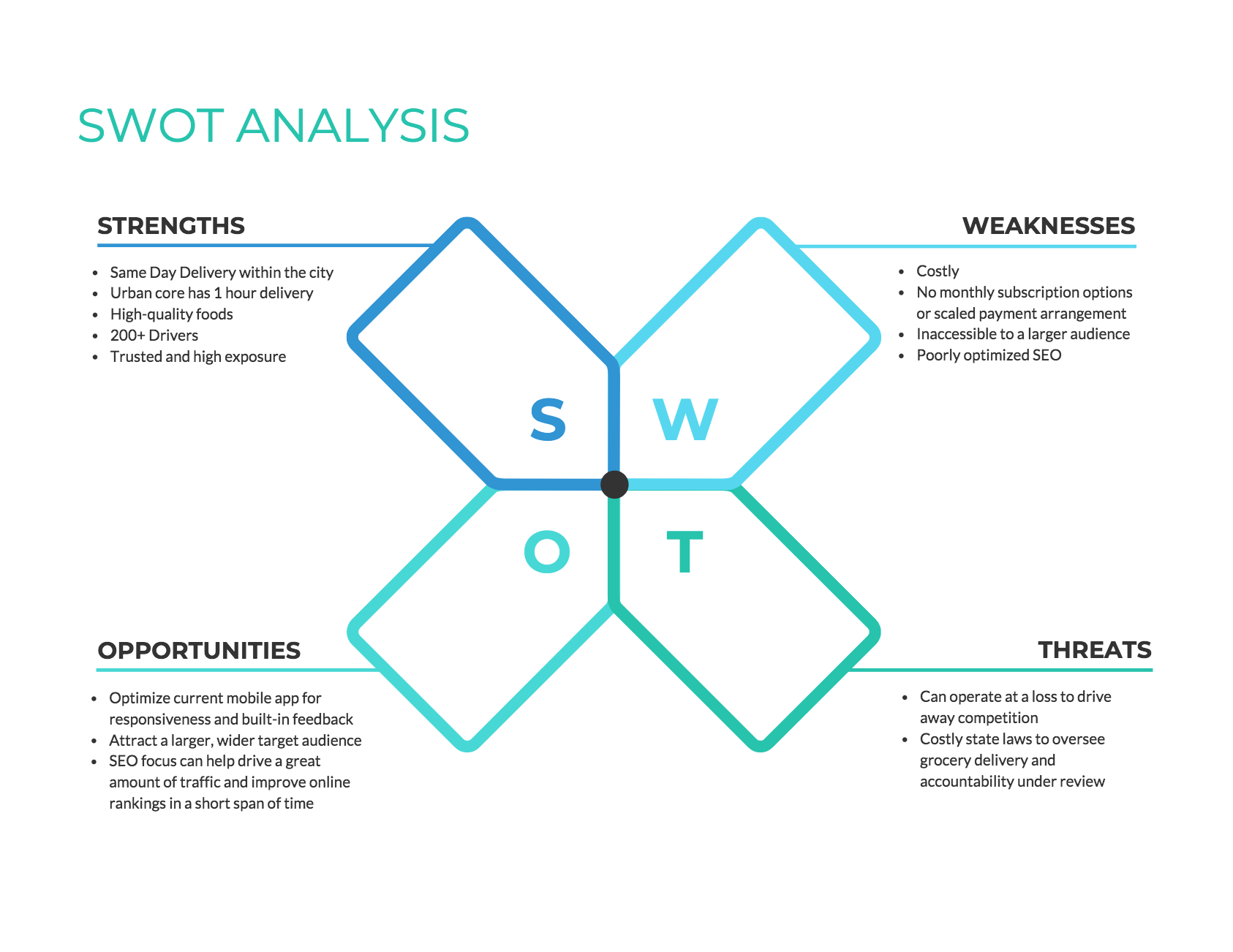
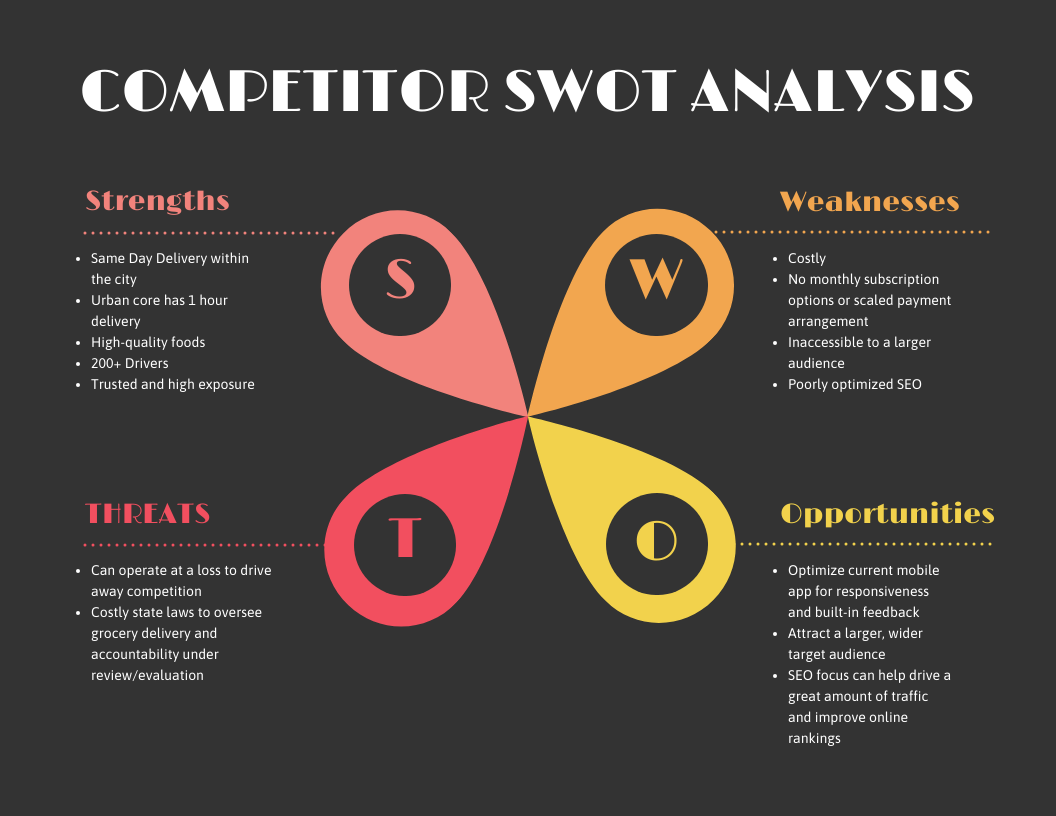
How to Conduct a Competitor Analysis Using SWOT
Here is a step-by-step guide to conducting a competitor analysis using SWOT:
1. Identify Your Competitors
The first step in conducting a competitor analysis is to identify your direct and indirect competitors. Direct competitors are businesses that offer similar products or services, while indirect competitors are those that cater to the same target audience or solve the same problem differently.
To identify your competitors, you can:
- Conduct online research: Use search engines, industry directories, and social media platforms to find businesses that offer similar products or services.
- Attend industry events: Participate in trade shows, conferences, and exhibitions to network with industry players and identify potential competitors.
- Survey your customers: Ask your customers about alternative solutions they considered before choosing your product or service.
2. Gather Information
Once you have identified your competitors, gather information about their strengths, weaknesses, opportunities, and threats. This information can be obtained through various sources:
- Website analysis: Visit your competitors’ websites and analyze their design, content, user experience, and online presence.
- Social media analysis: Monitor your competitors’ social media accounts to understand their engagement strategies, customer interactions, and brand reputation.
- Customer reviews: Read customer reviews and feedback about your competitors’ products or services to identify areas where they excel or fall short.
- Industry reports: Refer to industry reports and publications to gather insights about the overall market dynamics and competitors’ performance.
3. Perform SWOT Analysis
Once you have gathered the necessary information, it’s time to perform a SWOT analysis for each of your competitors. Create a competitor analysis worksheet and divide it into four sections: strengths, weaknesses, opportunities, and threats.
Under each section, list the relevant factors for each competitor. For example:
- Strengths: Identify your competitors’ unique selling propositions, competitive advantages, and areas where they outperform your business.
- Weaknesses: Identify the areas where your competitors fall short, such as poor customer service, limited product range, or outdated technology.
- Opportunities: Identify the potential growth opportunities your competitors are leveraging, such as expanding into new markets or launching innovative products.
- Threats: Identify the external factors that pose threats to your competitors, such as new regulations, changing consumer preferences, or intense competition.
By completing the SWOT analysis for each competitor, you will gain a comprehensive understanding of their position in the market and how your business can capitalize on it.
4. Analyze and Compare
After performing the SWOT analysis for each competitor, analyze and compare the findings. Look for patterns, trends, and insights that can inform your business strategy.
Identify areas where your business can differentiate itself from competitors, capitalize on untapped opportunities, or address customers’ pain points that competitors fail to address.
5. Develop Actionable Strategies
Based on the insights gained from the competitor analysis, develop actionable strategies to improve your business’s competitive position.
For example, if you identify a competitor’s weakness in customer service, you can prioritize improving your customer service to attract dissatisfied customers. If you identify a competitor’s strength in social media marketing, you can invest in enhancing your social media presence and engagement.
Keep in mind that competitor analysis is an ongoing process, and you should regularly update your analysis to stay ahead of market dynamics and changing competition.
Example Competitor Analysis Worksheet Using SWOT
Here is an example of a competitor analysis worksheet using SWOT:
Competitor: XYZ Company
- Strengths:
- Strong brand reputation
- Wide range of product offerings
- Excellent customer service
- Weaknesses:
- Limited online presence
- Higher pricing compared to competitors
- Outdated technology
- Opportunities:
- Expansion into international markets
- Launch of new product line
- Partnerships with complementary businesses
- Threats:
- New regulations impacting the industry
- Increase in competition from emerging startups
- Changing consumer preferences
By analyzing XYZ Company’s strengths, weaknesses, opportunities, and threats, you can identify areas where your business can gain a competitive advantage and develop strategies accordingly.
Tips for Successful Competitor Analysis
Here are some tips to ensure a successful competitor analysis using SWOT:
- Stay objective: Approach the analysis with an open mind and avoid any biases or preconceived notions.
- Focus on key factors: Identify the most important factors that impact your business and prioritize them in your analysis.
- Regularly update the analysis: Market dynamics and competition change over time, so it’s essential to regularly update your competitor analysis.
- Involve your team: Collaborate with your team members to gather insights and perspectives from different departments.
- Use a structured framework: SWOT analysis provides a structured framework for conducting a comprehensive competitor analysis.
By following these tips, you can ensure that your competitor analysis is accurate, insightful, and actionable.
Download The Competitor Analysis Worksheet!
A competitor analysis worksheet using SWOT is a valuable tool for businesses to gain insights into their competitors’ strengths, weaknesses, opportunities, and threats. By conducting a comprehensive competitor analysis, businesses can make informed decisions, develop effective marketing strategies, and stay ahead of the competition.
Remember to regularly update your analysis and adapt your strategies to the evolving market dynamics. With a well-executed competitor analysis, you can position your business for success in a competitive marketplace.
Competitor Analysis Worksheet Using SWOT – Excel Template